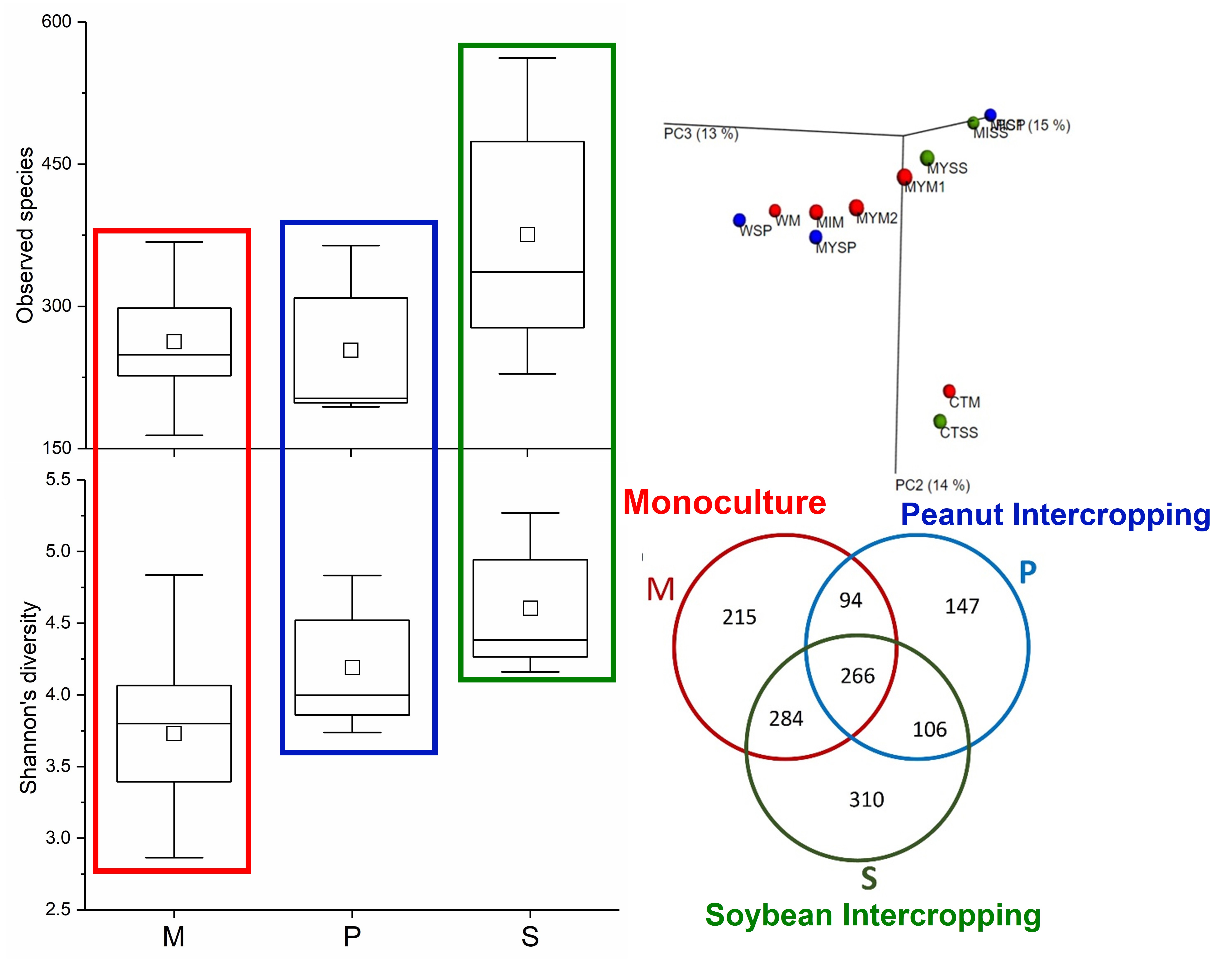Preprint
Article
Linkages of Soil Nutrients and Diazotrophic Microbiome under Sugarcane-Legume Intercropping
Altmetrics
Downloads
684
Views
482
Comments
0
supplementary.pdf (1.03MB )
Submitted:
17 October 2018
Posted:
17 October 2018
You are already at the latest version
Alerts
Abstract
Intercropping significantly improves land use efficiency and soil fertility. This study examines the impact of three cultivation systems (monoculture sugarcane, peanut-sugarcane and soybean-sugarcane intercropping) on soil properties and diazotrophs. Sugarcane rhizosphere soil was sampled from the farmers’ field. Soil properties and nifH gene abundance were analyzed by high throughput sequencing. Moreover, a total of 436,458 nifH gene sequences were obtained and classified into the 3201 unique operational taxonomic units (OTUs). Maximum unique OTUs resulted with soybean-sugarcane intercropping (<375). The dominant groups across all cultivation were Alpha-proteobacteria and Beta-proteobacteria. On the basis of microbial community structure, intercropping systems were more diverse than monoculture sugarcane. In the genus level, Bradyrhizobium, Burkholderia, Pelomonas, and Sphingomonas were predominant in the intercropping systems. Moreover, diazotrophic bacterial communities of these cultivation systems were positively correlated to the soil pH and soil enzyme protease. Moreover, low available P recovered from intercropping system showed a strong correlation with higher nutrient uptake activity of soil microbes. Based on the results, our investigation concluded that intercropping system caused a positive effect on the growth of diazotrophic bacterial communities and it might boost the soil fertility and this kind of study helps to develop an eco-friendly technology for sustainable sugarcane production.

Keywords:
Subject: Biology and Life Sciences - Agricultural Science and Agronomy
Copyright: This open access article is published under a Creative Commons CC BY 4.0 license, which permit the free download, distribution, and reuse, provided that the author and preprint are cited in any reuse.
MDPI Initiatives
Important Links
© 2024 MDPI (Basel, Switzerland) unless otherwise stated





